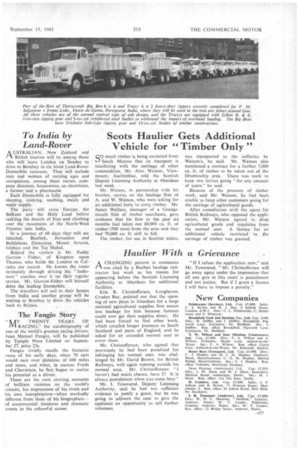To India by Land-Rover
Page 57

If you've noticed an error in this article please click here to report it so we can fix it.
AUSTRALIAN, New Zealand and British tourists will be among those who will leave London on Sunday to drive to Bombay in six hired Land-Rover Dormobile caravans. They will include men and women of varying ages and occupations, among them nurses, company directors. housewives, an electrician, a farmer and a pharmacist_
Each Dormobile is fully equipped for sleeping, cooking, washing, meals and water supply. • The party will cross Europe, the Balkans and the Holy Land before tackling the deserts of Iran and climbing over the mountains of the North-West Frontier into India.
In a journey of 60 days they will see Istanbul, Baalbek, Jerusalem and Bethlehem, Damascus, Mount Arrarat, Isfahan and the Taj Mahal.
Behind the .venture is Mr. Paddy Garrow Fisher, of Kingston upon Thames, who holds the London to Calcutta car record. He knows the route intimately through driving his -" Indiaman .coaches over it on their regular service. Mr. Garrow-Fisher will himself drive the leading Dormobile.
The travellers will sail to their homes from India and another. group will be waiting in Bombay to drive the vehicles back to Britain.
The Fangio Story
Y TWENTY YEARS. OF
IVI RACING," the autobiography of one of the world's greatest racing drivers: Juan .Manuel Fangio, will be published by Temple Press Limited on September 27. price 25s.
Fangio vividly recalls the fantastic races of his early days, when 70 cars would race over distances of 600 miles and more, and when, in ancient Fords and Chevrolets, he first began to realize his potential as a driver.
There are his own exciting accounts of brilliant victories on the world's circuits, his impressions of his rivals and his own interpretation—often markedly different from those of his biographers— of controversial incidents and dramatic events in his colourful career.




































































































































